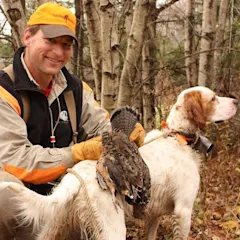The same drive and energy that keeps our sporting dogs
in the field can also get them into trouble. Every season, we handle dog injuries that come from encounters with porcupines, venomous snakes, and barbed wire, to name a few. To keep our bird dogs rolling through the entire season, we also have to watch what they eat.
Dr. Jill Cline is the Site Director for the Royal Canin
and Eukanuba
Pet Health Nutrition Center. The central-Illinois native grew up in a pheasant-hunting, bird-dogging family, and that experience influenced her long career of studying the impact of nutrition on sporting dogs. Here is her advice on 20 foods, plants, and other things your dog shouldn’t ingest.
Fine for Hunters, Bad for Dogs
After a hunt, a good venison steak is a great meal for hunters—and, if the meat is unseasoned, a bite or two is even OK for your dog. But not everything fit for human consumption carries over to hunting breeds. Here are some common examples to look out for.
1. Sports Drinks
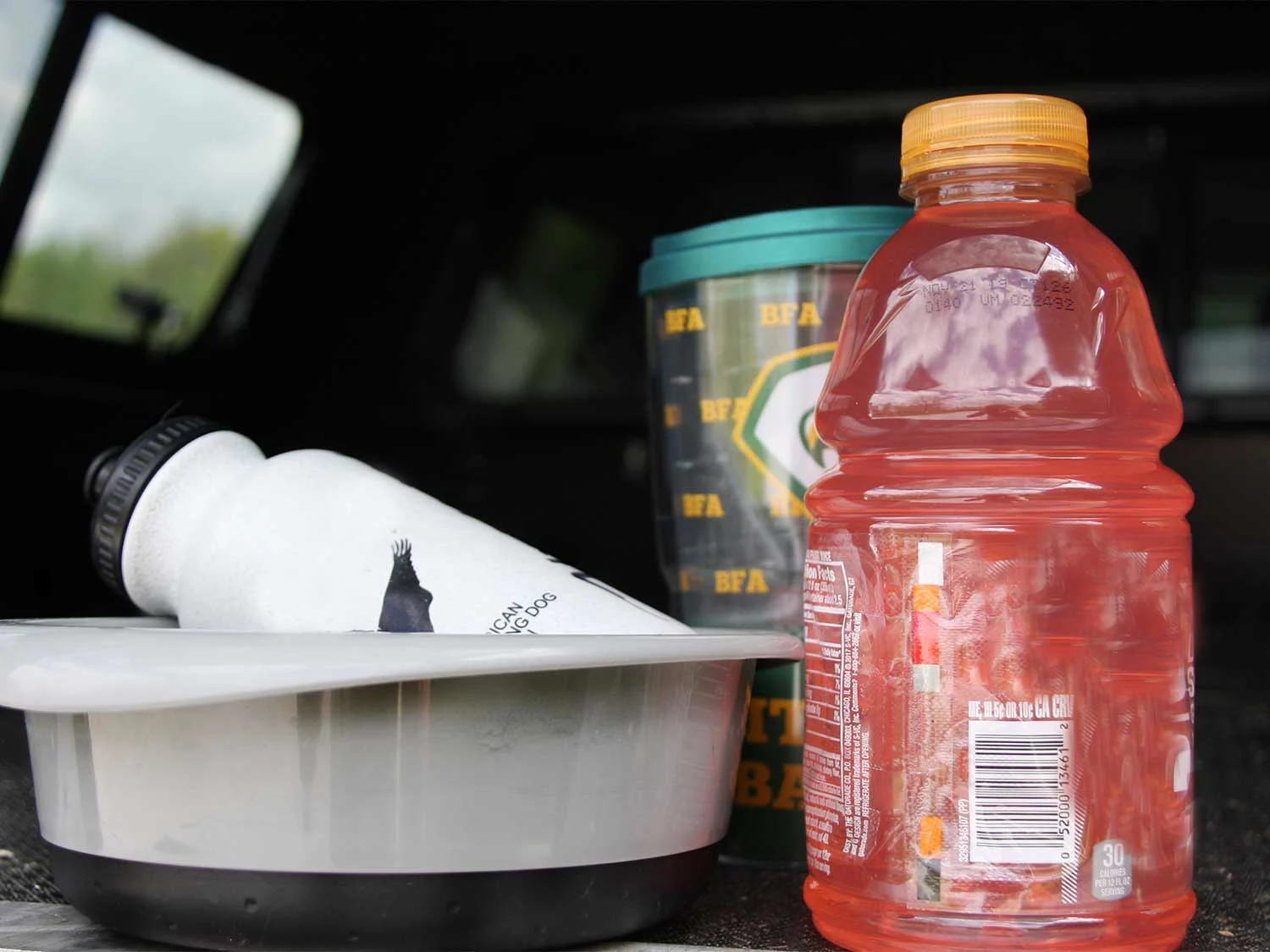
Sports drinks like Gatorade
are bad for your dog no matter how thirsty he may be. Nancy Anisfield
is delicious, but don’t share any with your dog. “Human electrolyte drinks like Gatorade were developed for football players that were dehydrated from sweating,” Cline says. “But dogs don’t sweat. They cool off by panting, which is why they don’t need electrolytes. Human-performance drinks are heavy in sugar, and for a dog to process sugar, they need water. Giving a panting bird dog a swig of Gatorade further dehydrates them. A bowl of clean water is ideal.”
2. Beer

Dogs can’t process any kind of alcohol. It can be very dangerous to their health. Nancy Anisfield
Don’t let your dog lick spilled beer, and certainly don’t give him a drink. According to Cline, “Alcohol is a dehydrator, as it pulls water away from a dog’s tissues. But of greater importance is that dogs don’t have the enzymes necessary to break down alcohol. Any amount of beer can send your best friend into toxic shock.”
3. Performance Bars
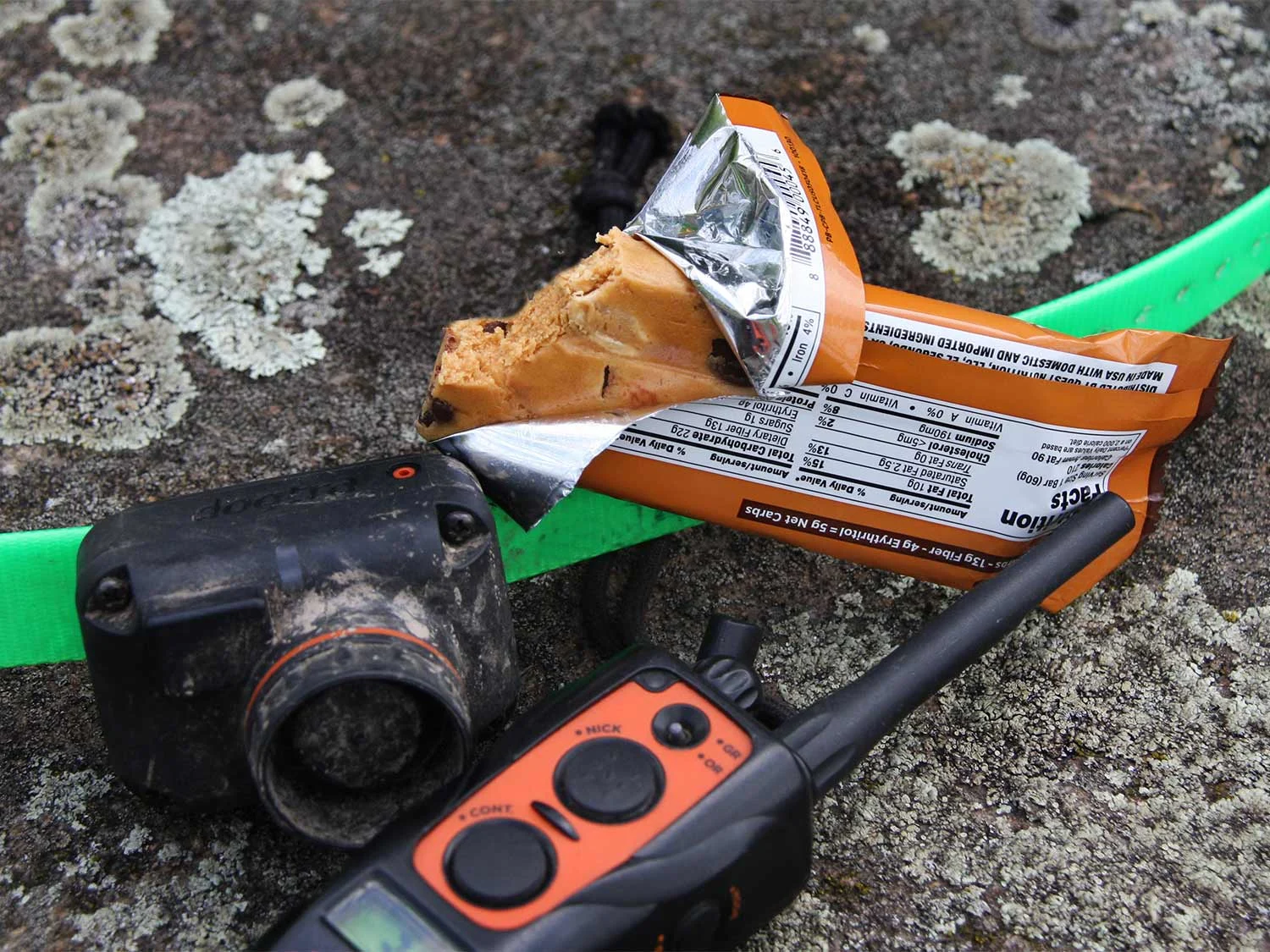
for either dogs or humans are not a good way to give your bird dog a quick pick-me-up. Nancy Anisfield
Feeding dogs a Power Bar
made for humans isn’t wise, but performance bars developed for dogs aren’t good either. “Feeding a dog a canine power bar might be a quick solution that masks a bigger problem,” Cline says. “A sedentary dog burns around 1,500 calories, while a working dog burns between five and seven times as much. Properly conditioning your dog and feeding him a 30/20 performance dog food
is the correct approach, making the power bar an unnecessary quick fix. An additional issue is that power bars don’t have fiber. Fiber grabs toxins released by working dogs, and without fiber, uric and lactic acid build up. Properly feed and condition your dogs and leave the bars at home.”
4. Undefined Supplements
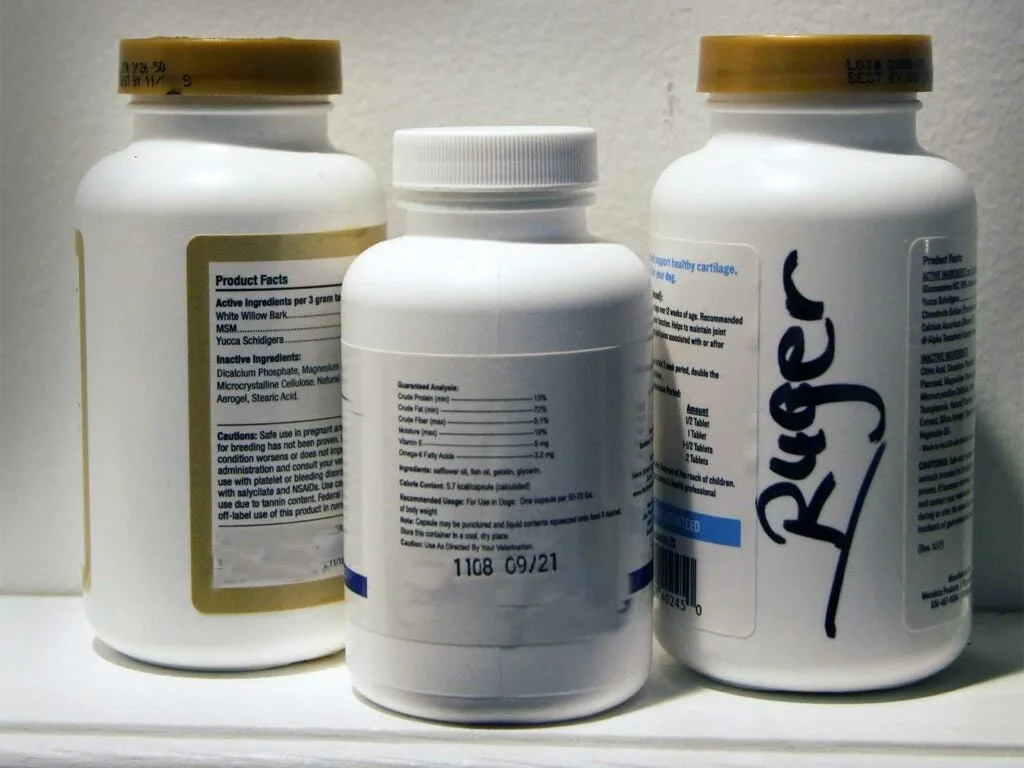
Stay away from any supplements designed to give your dog more energy in the field. Nancy Anisfield
Undefined supplements are performance-based foods comprised of vitamins, minerals, and nutrients intended to recharge your tired dog. According to Cline, “They aren’t bad for a working dog, but they might not be good, either. Current data is both insufficient and inconclusive. To my mind, if foods aren’t proven, then it’s best to avoid using them—particularly when good health can be achieved through an appropriate amount of 30/20 protein-to-fat, performance dog food
.”
Don’t Let Hunting Gear Become Chew Toys
Upland and waterfowl hunting
requires a lot of gear. Hunting dogs need to stay focused on the training and hunting at hand—otherwise all of that gear can become a chew toy. When dogs bored or anxious to go to work, these three pieces of gear can be the most problematic.
5. Plastic Bumpers
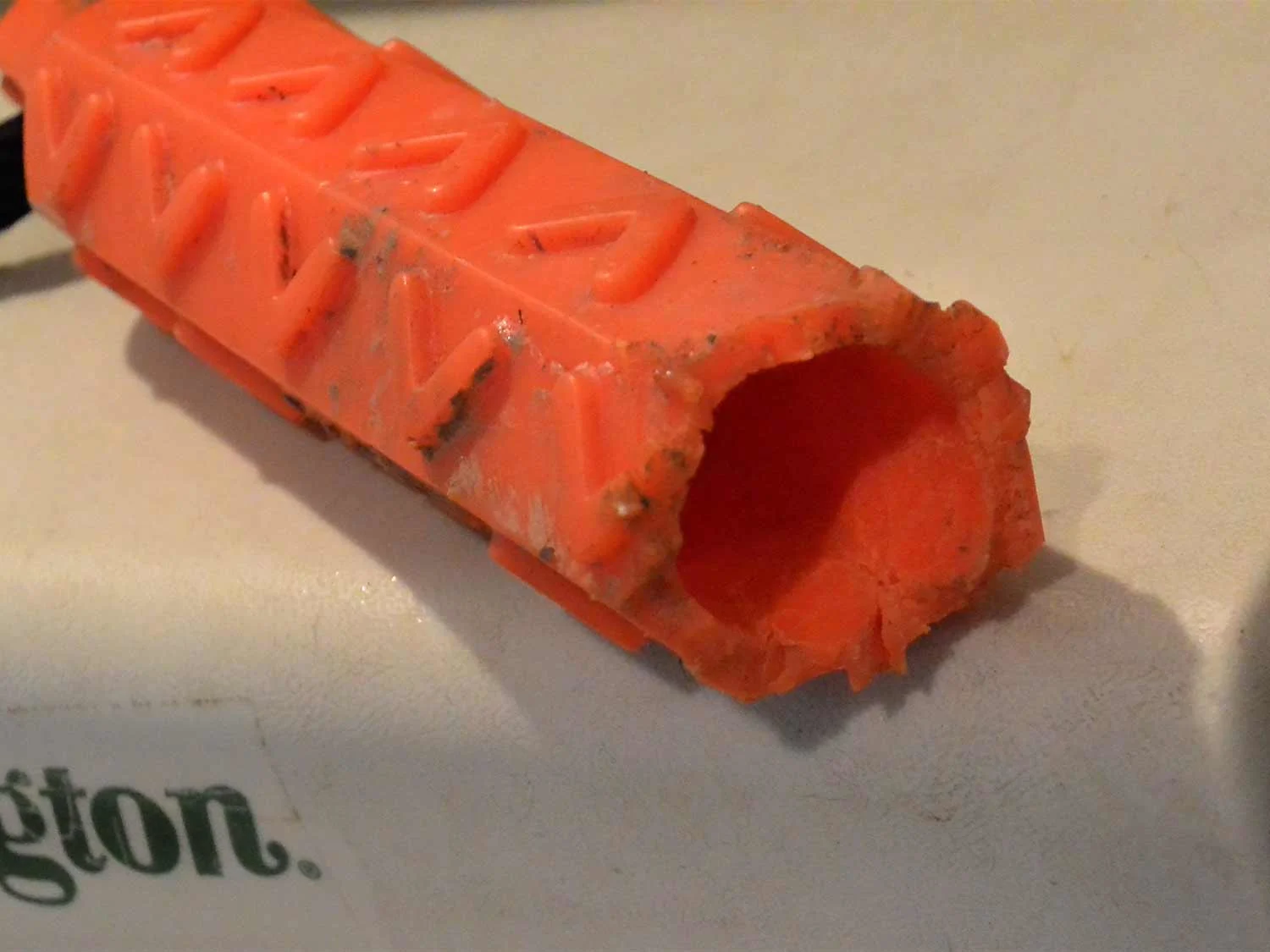
Plastic toys and training aids like this bumper
can turn into a meal for your dog if you’re not careful. Keep these away from your dog when she is alone for long periods of time. Nancy Anisfield
When your dog is running blind retrieves, she is searching for a bumper
to bring back. But when she’s bored, she’ll start to chew on that bumper. “Ingested pieces of plastic enter the stomach and don’t break down,” Cline says. “If they are small enough, they’ll pass through the small and large intestines. If they’re too large, they can cause blockage resolved only with costly surgery followed by lengthy bed rest.”
6. Crates
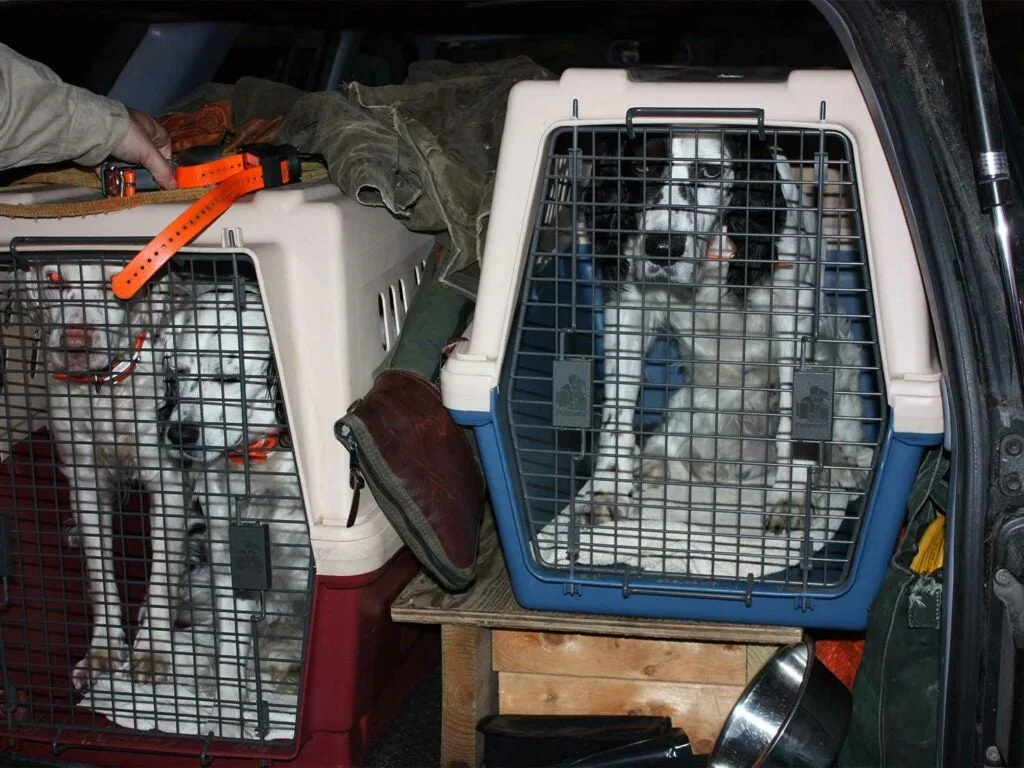
Dogs can chew on plastic crates if they are bored and looking for something to do. Tom Keer
Every birdy dog wants to hunt and be put in every field and cover even when she’s tired. But if you’re working a rotation to keep dogs fresh, then some dogs inevitably will be left behind. Kenneled dogs get frustrated, and some reduce stress by chewing on their dog box
. According to Cline, “If your kennel is plastic, a shard with jagged edges can create an occlusion in the esophagus or the GI tract. If those edges are sharp enough, they can puncture the throat or intestines and cause internal bleeding. A benign but foul-tasting spray applied to areas of access keeps them safe.”
7. Collars
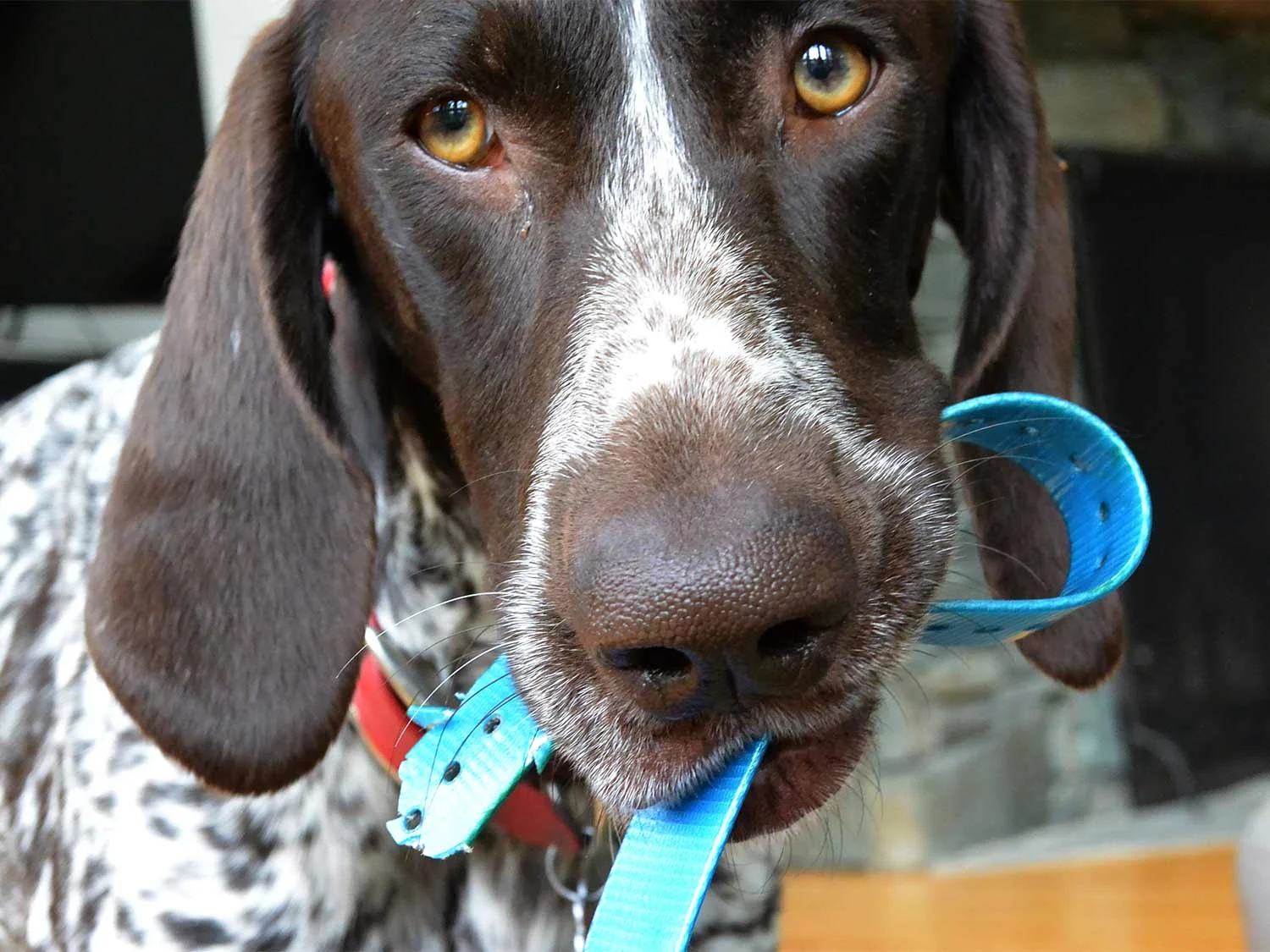
Keep collars
trimmed and short to prevent your dog from chewing on the end of it. Nancy Anisfield
Bored dogs chew, and if their collar
is too long, they’ll munch on the tab. Cline says, “As with bumpers, small pieces may pass through the GI system, but if they engulf a lengthy section then blockages can occur. Trim the ends of the collar, and you’ll be fine.”
Water, Water Everywhere, Nor Any Drop to Drink
During most hunts, it’s not difficult to find a source of clean water—whether it’s from a stream, pond, or river—to rehydrate a thirsty gun dog. But dogs don’t always know there is freshwater nearby, and so they’ll often drink from what is immediately available. Some of those water sources can cause problems.
8. Mud Puddles
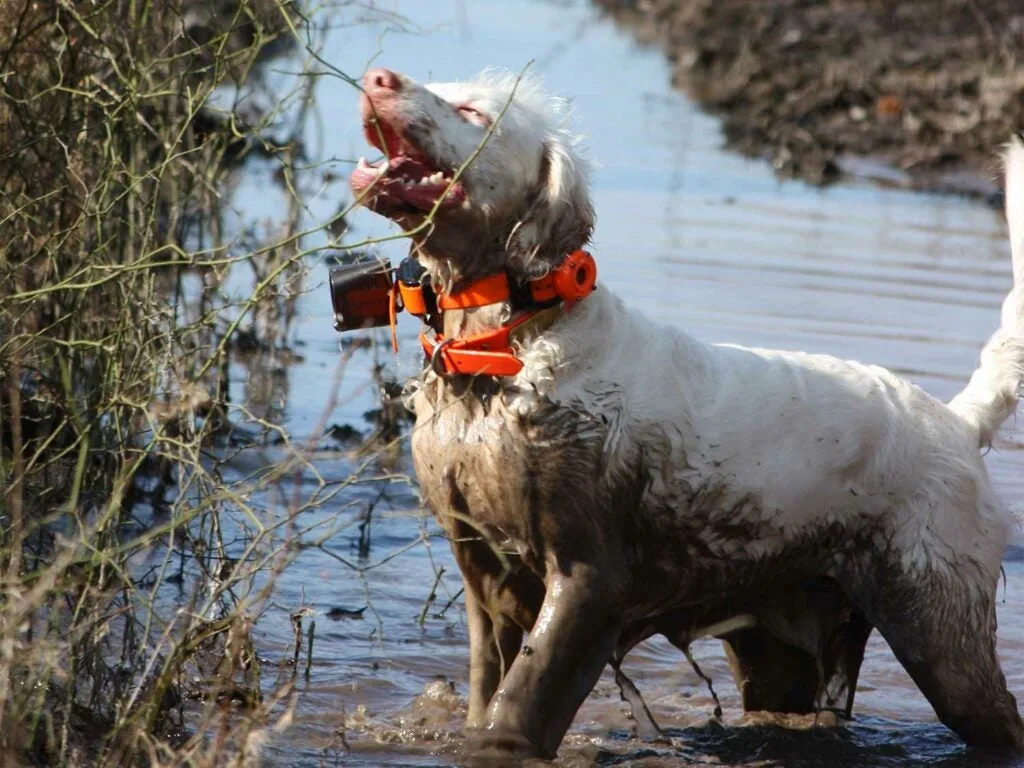
It’s next to impossible to keep a dog from jumping in the mud, and while it’s safe for him to play in, drinking from it is a different story. Tom Keer
Cooling off in a mud puddle is OK, but drinking from it can cause illness. “Bacteria and protozoa found in standing mud puddles cause giardia and diarrhea, which reduces a dog’s performance,” Cline says. “And there is no telling what kind of toxins are in those puddles. Runoff may contain weed killer or fertilizer used in nearby fields. If you’re hunting on dry terrain, wear a vest with a CamelBak
bladder or carry along several bottles of water and a collapsible bowl
.”
9. Saltwater
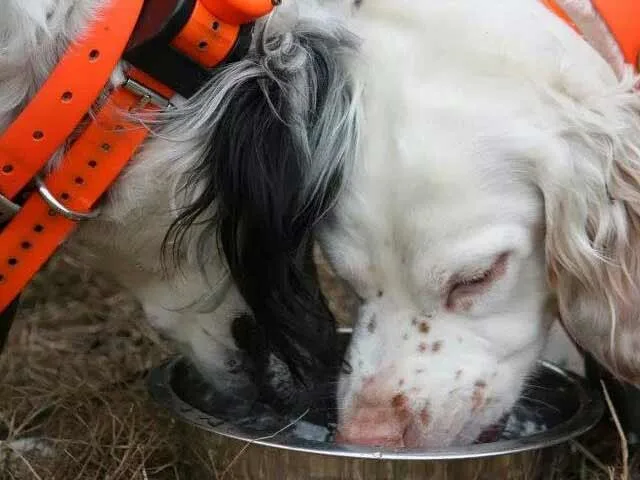
Keep a bowl handy when you’re out hunting along with enough water for your dog, especially if you’re near saltwater. Tom Keer
Coastal areas are home to a lot of game like pheasants, quail, rabbits, woodcock, and, of course, sea ducks. When dogs get hot, they will head to the ocean’s edge looking for a drink. “The salt in the water is a dehydrator, and drinking enough of it can shut down their kidneys. Handlers should pull dogs immediately away from the saltwater and rehydrate with bottled water poured into a collapsible bowl
.”
Wash Up Before Dinner
Dogs clean themselves for a lot of different reasons, and most of the time it’s fine. Their saliva has antibacterial enzymes that help them get rid of infections in open wounds. Licking can also get rid of dead skin cells and encourage healthy fur growth. But during a hunt, it’s common for a dog to run through some nasty cover, potentially exposing him to pesticides and insects. Here are some examples of why it’s best for you to clean your dog before he does it himself.
10. Pesticides Ingested by Licking
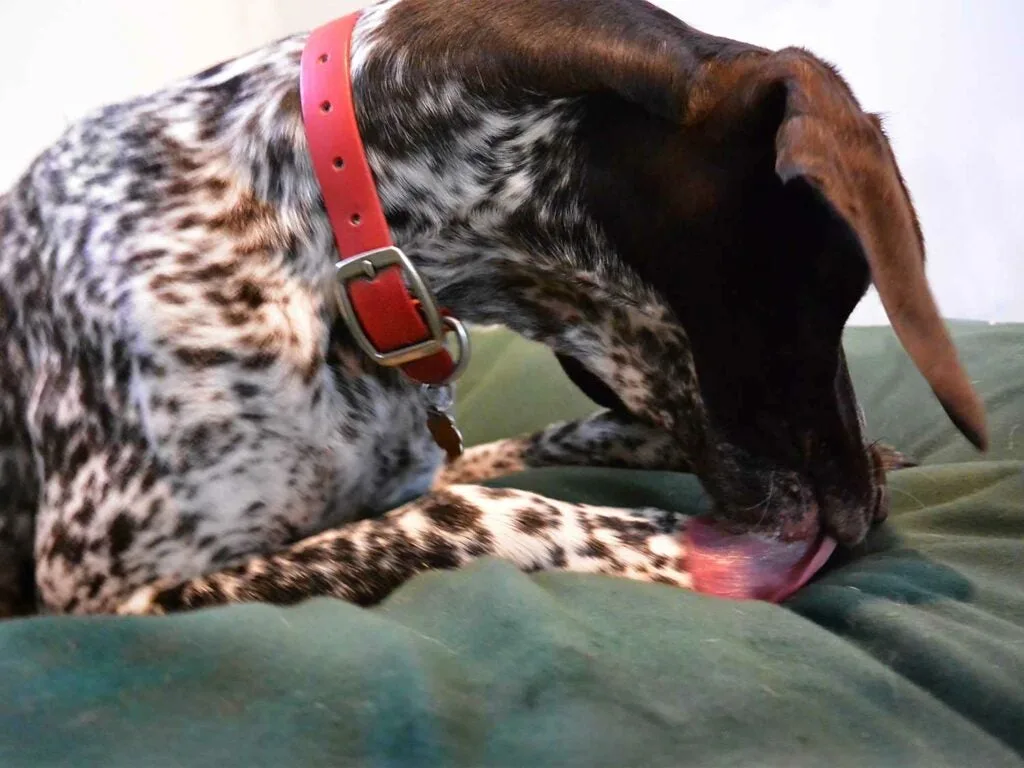
Licking is OK, but be sure to wash your dog after a hunt, especially if you think they may have been exposed to pesticides. Nancy Anisfield
Cline says, “If you’re hunting in shelterbelts next to fields of row crops and your dog licks its paws or pads, they may ingest fertilizer or pesticides used in the field. If you’re concerned about what sprays a farmer may have used, rinse off paws prior to loading up your dogs.”
11. Diseases Contracted by Rolling
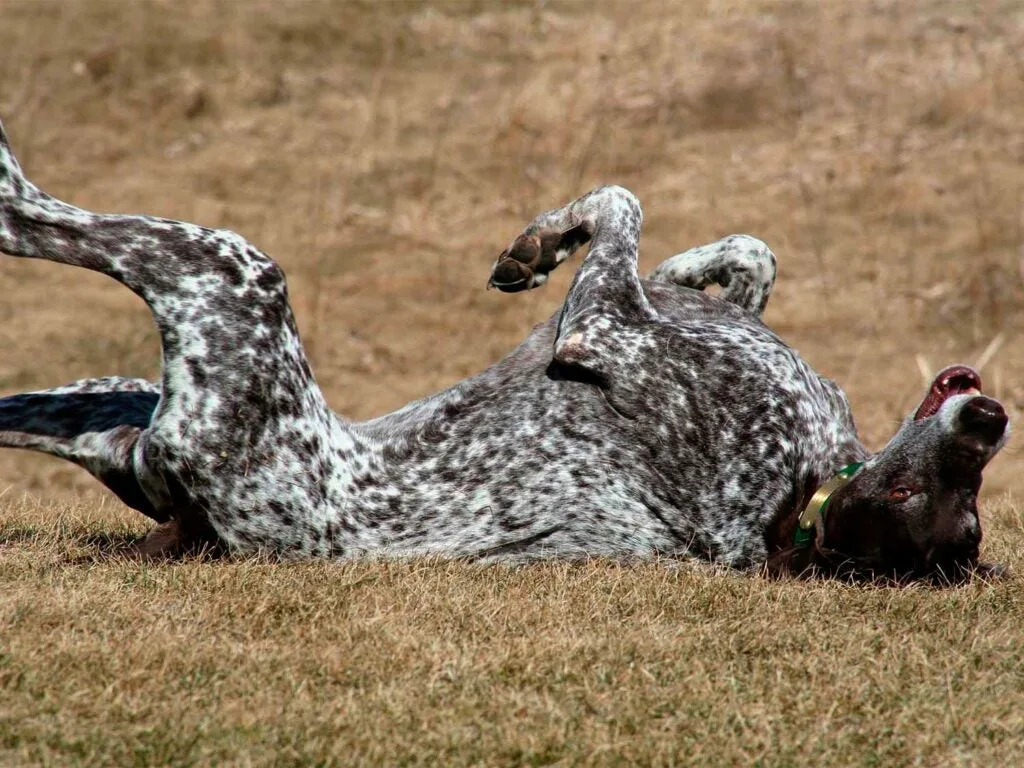
Make sure to wash your dog before the end of the day if she likes to roll on the ground. Nancy Anisfield
“A lot of dogs love to roll, and if they roll around in a field of winter rye, they might just be scratching their back,” Cline says. “But if they roll in cow pies, then there is a good chance they can get sick if they lick themselves. To avoid sickness, wash them off in a pond or stream before putting them in the kennel,” she recommends.
12. Seeds from Hitchhiker Plants
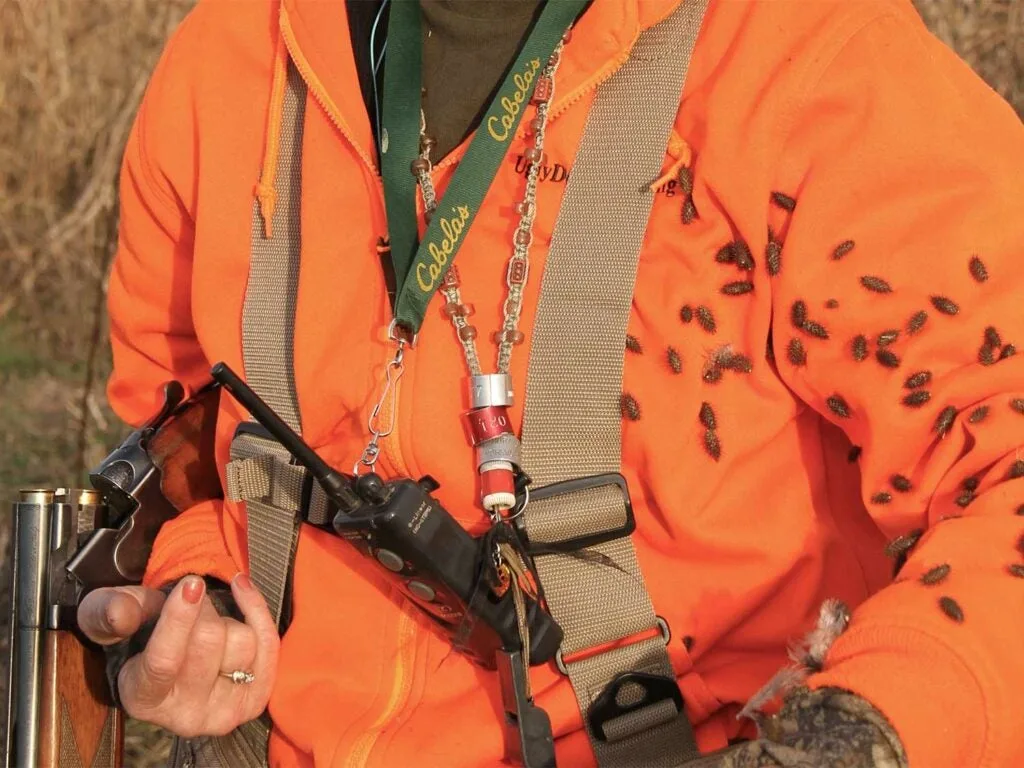
Seeds like these can be annoying to pick off but even worse if your dog eats one. If you’re covered, you should probably check your pup’s fur before calling it a day. Nancy Anisfield
Look down at your shirt sleeves or brush pants. If they’re loaded with hitchhikers, it’s a good idea to get out a brush and check your dog too. “Dogs trying to remove burdock, beggar’s lice, or cockleburs from their coats can swallow the seeds which can get lodged in their throat or GI tract,” Cline says. “Comb out any prickly seeds before they get swallowed.”
Camp Grub
Spending time at camp after a hunt is always fun, but things can get disorganized. Tabletops can get cluttered with all sorts of stuff your dog shouldn’t eat—but would in a second if any of it were to fall on the floor. So be careful, because if any of these foods are toxic to dogs, you could be spending the next day at the vet clinic instead of in the woods.
13. Garlic

It takes some time for garlic to make a dog sick, but once it does, that sickness can be debilitating. Nancy Anisfield
Dogs should take a cue from vampires. “Garlic is poisonous to dogs, but the effect may not be seen for several days,” Cline says. “If you want to avoid a lethargic and weak dog that vomits, has an elevated heart and respiratory rate, and can collapse, make sure that no garlic hits the floor.”
14. Onions
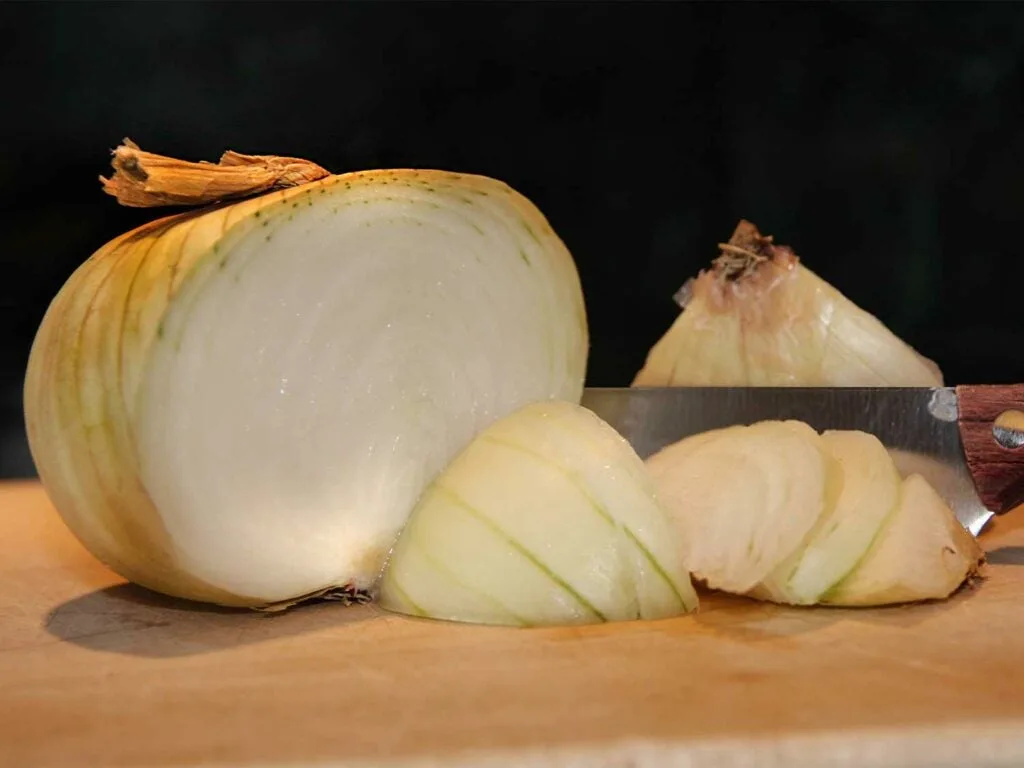
Onions aren’t as dangerous as some foods, but they are still bad for your dog. Nancy Anisfield
While they only make your breath smell, onions are toxic to dogs. Cline says, “The toxins in an onion create hemolytic anemia that can destroy or impact a pup’s red blood cells. Low red blood cells make dogs susceptible to illness, and while they’re not as dangerous as some human foods, they should be avoided.”
15. Chocolate

Large amounts of chocolate can cause serious problems including death. Nancy Anisfield
“If a dog has a small amount of chocolate, they’ll probably suffer from an upset stomach followed by diarrhea,” Cline says. “But if they chow down on the double-layer cake on the table, they could suffer from muscle tremors, seizures, internal bleeding, or have a heart attack. Theobromine poisoning is the cause, with hyperactivity followed by seizures being the result.”
16. Large Meals

Too much food can cause a dog to bloat. Nancy Anisfield
Everyone works up an appetite during a hunt, but when it’s time to put on the feed bag, don’t give your pup too much food. Cline says, “Hungry dogs gulp food, and if they’re not chewing properly, it’s difficult for absorption in the GI tract to occur. The sudden volume of food causes them to bloat. Blood rushes to internal organs to aid in digestion, and this pulls it away from muscles that need oxygen and white blood cells to engulf the bacteria that comes from vigorous exercise. Feed your dog several smaller portions with a space of time in between.”
Environmentally _Un_friendly
If you’re taking a break in the woods, keep your eye on your pooch. Most of the time he’ll rest up for the next hunt, but if he roots around, you might be spending the afternoon at the vet.
17. Grass
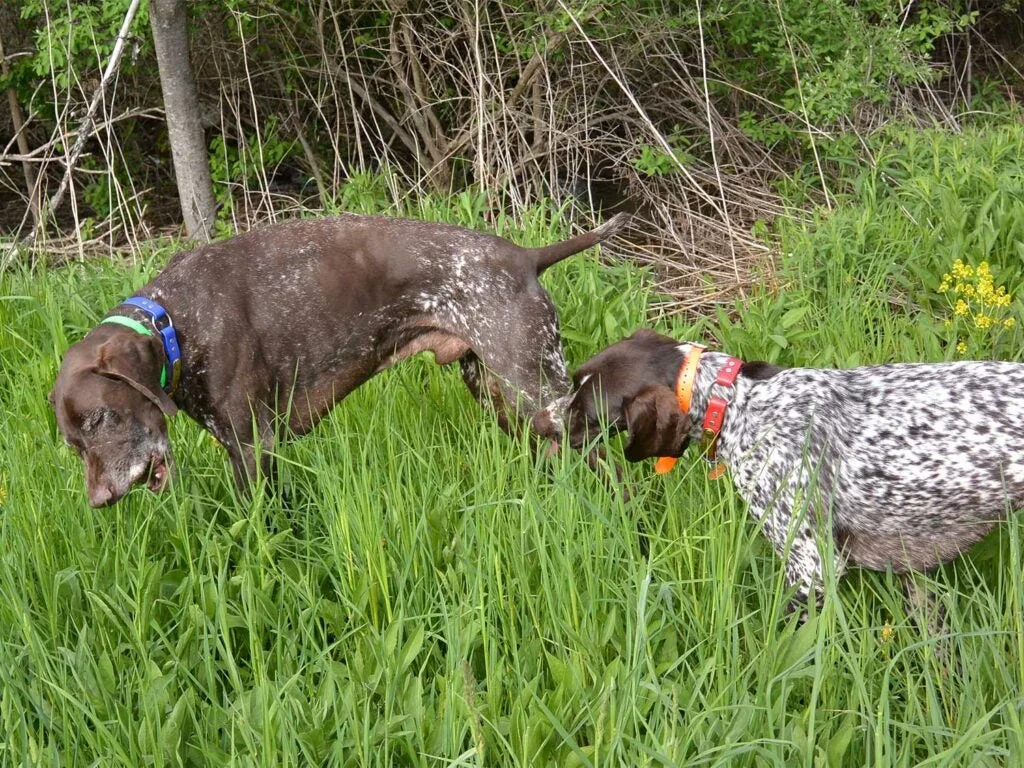
It’s common for dogs to eat grass, but watch out for fertilizers and pesticides. Nancy Anisfield
Is it OK for a dog to eat grass? “That’s the million dollar question, but there is no formal data on what grass does to a dog’s gut,” Cline says. And because research studies are so invasive, the answer probably won’t come any time soon. What is known is that dogs frequently vomit after they eat grass, which is not good for the esophagus. “If you’re hunting in farm country, there is no way to tell if the grass has been treated with chemicals. If you think your dog is eating grass because he has an upset stomach, then consult your vet.”
18. Mushrooms
“Toxins destroy a dog’s liver and immune system making recovery difficult if not impossible,” says Cline. “Grocery store mushrooms are safe, but the amanita is the most dangerous. False morels
that you avoid while foraging
won’t kill a dog, but they will promote intense vomiting. Hallucinogenic mushrooms like psilocybe have the same effect of abnormal behavior, howling, and strange eye movement no different than in humans,” Cline says.
19. Buckeyes
“Buckeyes are deep brown nuts with a light spot resembling a deer’s eye,” Cline says. “They’re in the same family as horse chestnuts and are pretty to look at. But real chestnuts come from the beech family and are edible. Buckeyes and horse chestnuts are toxic. Keep them away from your dog, and that goes for their five-sided husk that can get stuck in pads or, if eaten, in their throat or GI tract.”
20. Milkweed
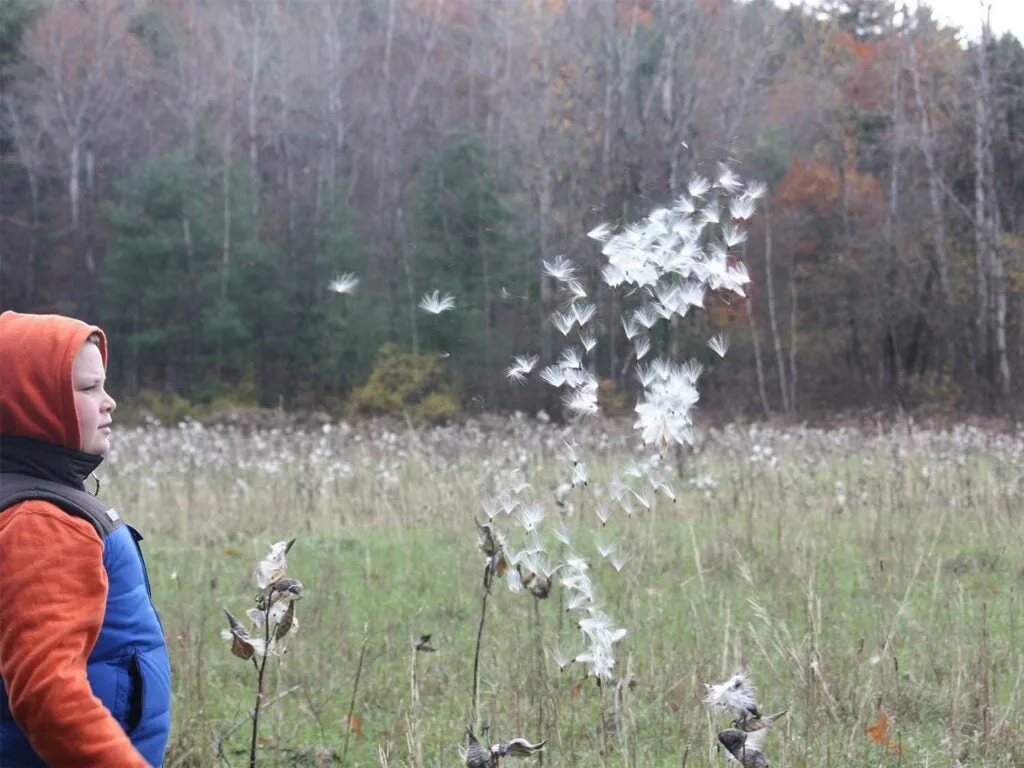
If you see your dog enter a patch of milkweed, be sure that he doesn’t eat any, and make sure to brush out his coat after a hunt. Tom Keer
Old farm fields frequently grow full with milkweed
. “Dogs that eat the plant can be poisoned by the galitoxin and cardiac glycosides,” Cline says. “Symptoms include decreased heart rate, collapse, erratic heartbeat, and seizures. Tremors followed by sudden death occur if the dog has eaten a lot. Whistle your dog out of the milkweed stand and comb him out before kenneling him, and you can avoid the problem.”


